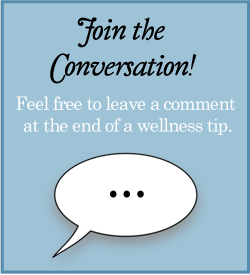 What’s Up with Doctor-Shopping for Prescription Drugs?
What’s Up with Doctor-Shopping for Prescription Drugs?
Prescription drug abuse is a serious and growing problem. Apart from the illegal use of a friend’s prescription to get ‘high,’ certain controlled substances are highly addictive even when prescribed to help performers reduce pain, curb anxiety or help deal with other medical and psychological issues (e.g., ADHD). Physical tolerance that requires more medication to create the same effect, combined with psychological dependency, often leads to “doctor-shopping” for the same prescription from several physicians—until now! As of August 27, 2013, New York has become the first state to require an Internet System for Tracking Over-Prescribing (I-STOP) where your doctor must review your recent history of controlled substances from a real-time database before writing an automatic refill. If you are one of the 20% of Americans who abuse prescription drugs, it pays to recognize the signs of addiction and misuse.
Common Addictive Prescriptions
Controlled substances that are frequently abused generally fall into three drug categories which activate the reward center of the brain, albeit with untoward consequences associated with high doses and withdrawal. These include:
1. Narcotic painkillers
While they may seem like a lifesaver when an important role comes up and you’re in pain, ongoing reliance on these medications can lead to more serious injuries as well as side effects like depression, confusion, and poor coordination—not exactly a recipe for success. Over time, prolonged use of painkillers may also cause an increased risk of choking, low blood pressure, breathing problems, and coma. If you are abusing these medications, other drugs may help ease side effects during the withdrawal phase when conducted under medical supervision.
2. Sedatives/tranquilizers
These drugs are used for treatment of anxiety and sleep disorders that can also be a panacea for stressful moments associated with fear of failure, unrealistically high standards, or ongoing insomnia. Yet, depending on these medications for long-term use can lead to drowsiness, confusion, unsteady walking, dizziness, and poor judgment. They can also cause memory problems, as well as coma or death from an overdose. Because it can take weeks to months tapering off these medications, your doctor may prescribe other drugs to stabilize your mood and help with anxiety. Going cold turkey is a bad idea and may lead to hyperactivity of the nervous system and seizures.
3. Stimulants
When used for problems like ADHD, certain sleep disorders, and in combination with other medications for some forms of depression, these drugs show well-documented benefits. However, a common form of drug abuse is to use these medications for more energy. The side effects include agitation, irritability, inability to sleep, restlessness, and impulsive behavior. These medications can also cause dangerously high body temperatures, tremors, hallucinations, paranoia, and aggressiveness. Sadly, a change in personality may be more obvious to your colleagues than to you. While there are no approved medications for relieving the symptoms of withdrawal (apart from medical detox), counseling, exercise, and support are important for helping you overcome misuse.
Conclusion
While your initial goal for taking these prescription drugs may be to relieve pain, decrease tension, or increase concentration, the end result can be a disaster when they are used without medical guidelines. Please talk to your doctor if you think you have a problem. The earlier you tackle prescription drug abuse, the easier it is to ward off a potential addiction that leads to serious consequences down the road. For more help, check out the stages of change associated with altering ingrained behaviors including addictions. Your doctor may also refer you to an addiction specialist or facility that can help you during the withdrawal phase.








